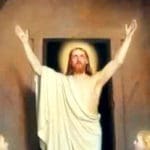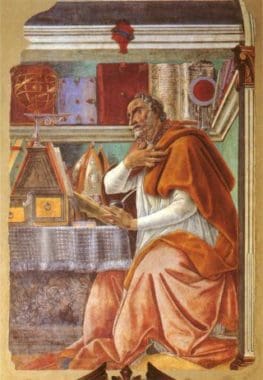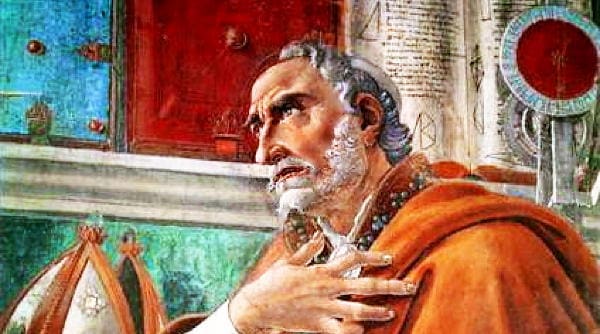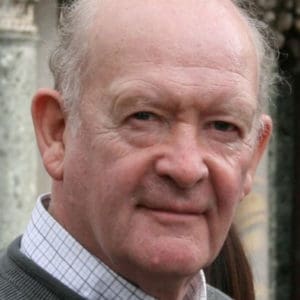Mini-Course on Prayer
Part 7 – Father “F” – Faith in Our Risen Lord
Abandonment to the Fullness of Love
Editor’s Note: In Part 6 of this mini-course, David Torkington examined the letters U (union with the mystical body) and R (reviewing the day ahead) in his explication of the “OUR FATHER” mnemonic, or memory jog, for keeping God and prayer at the forefront of our lives. Today, he continues with the letters F (faith) and A (abandonment).
In my seventh article on prayer, I would like to say a few words about the importance of making a profession of faith. Always begin daily prayer with a profession of faith. That is why in the little memory jog that I am explaining for you the first letter of the word Father -F- is a reminder to make an act of faith. I don’t mean by reciting some traditional formula of faith or even professing belief in every article of the creed or in every dogma that the church teaches. There is a time and place for that, however this is the time for  something else. Our faith is not firstly a belief in a body of truths but in a Body full of love that was filled to overflowing on the first Easter Day. Ever since the first Pentecost Day, God’s love has been pouring out of Jesus and into all who freely choose to receive it, to draw them into the fullness of life that is fully embodied in His risen Body, sometimes called his Mystical Body. It is here alone that we are all destined to live and move and have our being and experience something of the ecstatic bliss that Jesus experiences now and to all eternity.
something else. Our faith is not firstly a belief in a body of truths but in a Body full of love that was filled to overflowing on the first Easter Day. Ever since the first Pentecost Day, God’s love has been pouring out of Jesus and into all who freely choose to receive it, to draw them into the fullness of life that is fully embodied in His risen Body, sometimes called his Mystical Body. It is here alone that we are all destined to live and move and have our being and experience something of the ecstatic bliss that Jesus experiences now and to all eternity.
The All-pervading Presence of God’s Love
This is one more reason why the fish became a symbol of a Christian in the early Church. They came to see and understand that the love of God was for them what the sea is for the  fish, the living environment outside of which they could not exist. St Augustine takes this analogy one step further, substituting a living sponge for the fish, to show that we are not only surrounded at all times by the love of God, but are penetrated through and through by his all-pervading presence. This loving presence is the supernatural environment in which we can grow, becoming ever more perfect Christ-like human beings. Although this is the profound truth in which we express our faith at the beginning of prayer we may rarely experience anything, at least to begin with. Much more often than not we have to accept in faith what Christ continually experiences and what we would like to experience one day for ourselves. Nevertheless, this is the time to make a profound act of faith in this all-pervading presence of God’s love. It is time to pray too that this love will become more and more real to us, not just while we are at prayer, but throughout the forthcoming day and every day.
fish, the living environment outside of which they could not exist. St Augustine takes this analogy one step further, substituting a living sponge for the fish, to show that we are not only surrounded at all times by the love of God, but are penetrated through and through by his all-pervading presence. This loving presence is the supernatural environment in which we can grow, becoming ever more perfect Christ-like human beings. Although this is the profound truth in which we express our faith at the beginning of prayer we may rarely experience anything, at least to begin with. Much more often than not we have to accept in faith what Christ continually experiences and what we would like to experience one day for ourselves. Nevertheless, this is the time to make a profound act of faith in this all-pervading presence of God’s love. It is time to pray too that this love will become more and more real to us, not just while we are at prayer, but throughout the forthcoming day and every day.
Through Love into Light Inaccessible
When we pray each day, the letter -F- is to remind us of the ever-continuing outpouring of God’s love that comes to us in the sacrament of every present moment. It may come to us directly in prayer or indirectly though the love of our husband or wife or of our children or brothers and sisters, relatives and friends. Either way, he is loving us now through Jesus, so that his infinite loving can be transposed into human loving in such a way that we can experience it here and now. Furthermore, we can experience it in such a way that it can fill us with the love we need to grow, as Jesus grew into a perfect human being. Then, in, with and through him, we are raised up as if by some spiritual magnetic force, to be enfolded by the love of our common Father, and to remain there in our true home to eternity. This is what we believe in when we make our daily act of faith, in God our Father and in Jesus Christ his Son, sent so that we can become sons and daughters of the unutterably Other who dwells in light inaccessible, made accessible to us, because that light is love.
Pause in Contemplative Stillness
When we have made our act of faith slowly and prayerfully, mulling over what it means, reflecting and ruminating on all that has been said, to penetrate its meaning with all that human and divine understanding can do to enlighten us, it is time to pause in prayerful stillness. Gradually, a sublime realisation will begin to stir in the utmost depth of our being. For once this act of faith has been reflected on and understood, we will inevitably be inspired to make another act. This time, it is an act of total abandonment to God through Jesus. What other response could we possibly make? If this is asking too much, then sadly it means that we have become wedded to a purely nominal faith, doing the bare minimum. It means that we have become completely oblivious to God’s ongoing plan to sweep us up here and now into the man Dom Eugene Boylan called ‘This Tremendous Lover’. For it is here, even in this life, that he wants us to experience something of the ecstatic bliss that will be ours to eternity in the next.
FATHER – A – Abandonment
Although we do not know a hundred and one things that Jesus did in the hidden years, we do know the most important things that he did. We know when he prayed, where he prayed and how he prayed, continually abandoning himself to his Father. We know that he prayed first thing in the morning to consecrate his day to God, we even know some of the prayers and some of the psalms that he would have used for that purpose. We know that he would have prayed last thing at night too, and some of the prayers and psalms to which he would have turned. He would have gone to the Synagogue each day, to say a prayer called the Shema. For the Jews, and therefore for Jesus too, this prayer embodied within it a total abandonment to God by promising to love him with their “whole heart, with their whole soul and with all their strength,” as they had been commanded to do, as the first and greatest of all the commandments (Deuteronomy 6:5). This prayer was said three times each day in the synagogue at the third, the sixth, and the ninth hour. If, for whatever reason a good Jew was prevented from doing this, then at those same times he would stop his work, or his journey or rise from his sick bed to say the prayer that was meant to dedicate every moment of every day to God. They also said another prayer whenever they came together for meals, to thank God not just for the food on the table, but for land that was given them to provide for it. They thanked him too for all he did for them in the past, was doing for them now, and had promised to do for them in the future. This prayer was called the Berakah the prototype for what we now call the Canon of the Mass.
Praying in the New Temple – Christ
The times set aside for the recitation of the daily Shema were not arbitrary, for it was at these times that the sacrifices were being made in the Temple in Jerusalem. When the first Christians continued to pray at these times they were taught that now the Old Temple was no more, they were in future to offer themselves in the New Temple which was Christ. In order to remind them that in doing this they were uniting themselves to his Sacrifice, they were encouraged to reflect on his condemnation to death at nine in the morning, to remember his Crucifixion at twelve and his death at three o’clock. This would help them to participate continually in his sacrificial life and death, abandoning themselves to the Father through him. I will have more to say about this when I deal with meditation.
These ideas are developed further in my two major works on prayer – Wisdom from the Western Isles and Wisdom from the Christian Mystics. Wisdom from Franciscan Italy shows how the mystical life is lived by St Francis of Assisi, called in his lifetime, a Second Christ.
Editor’s Note: In part 8 of this mini-course, David Torkington will look at the letters T (thanksgiving) and H (Holy Communion) as he continues to explain the “OUR FATHER” mnemonic, or memory jog, for keeping God and prayer at the forefront of our lives.
+
Art for this post on faith in our risen Lord and abandonment to the fullness of love: Detail Resurrection of Christ, Carl Heinrich Bloch, 1875; Augustine of Hippo [retouched], 1480, Sandro Botticelli; both PD-US author’s life plus 100 years or less; both Wikimedia Commons.





